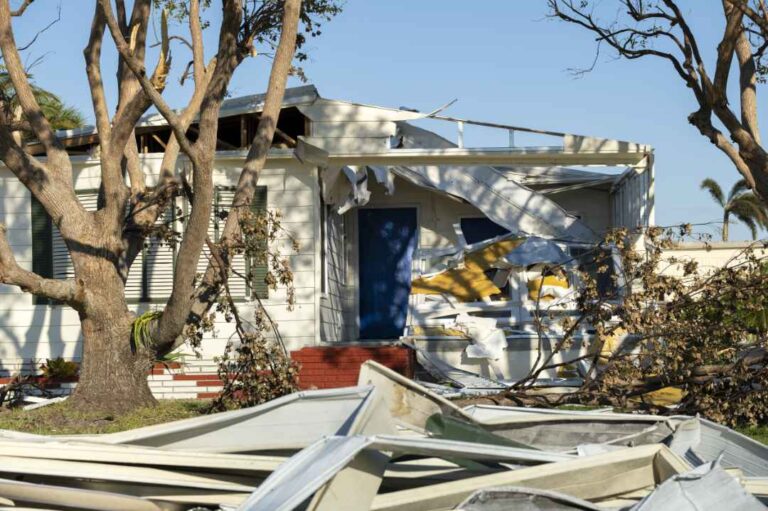The Disheartening News – Your Hail Damage Insurance Claim Denied
You’ve diligently followed the steps: documented the hail damage to your Chicagoland home, obtained professional assessments, and filed your insurance claim. You’ve been waiting anxiously, hoping for the green light to begin repairs. Then, the letter arrives: “Claim Denied.”
For homeowners in Illinois, receiving a denied hail damage claim can be incredibly disheartening, frustrating, and even alarming. It often leaves you feeling helpless, unsure of why your claim was rejected, and questioning how you’ll afford the necessary repairs to protect your most valuable asset. But a denial, while a setback, is not always the final word.
At Seidel Exterior Group, we’ve been expertly guiding Chicagoland homeowners through storm damage assessment, repair, and complex insurance claims since 1970. We understand this major pain point and have extensive experience navigating denied claims. We know that insurance companies sometimes miss damage, interpret policies differently, or simply make mistakes. This article provides a clear, actionable path forward, detailing the next crucial steps you can take if your hail damage claim in Illinois has been denied, empowering you to fight for the coverage you deserve.
Why Was My Hail Damage Insurance Claim Denied? Understanding the Reasons
Before taking any action, it’s crucial to understand why your claim was denied. Your insurance company is legally obligated to provide you with a formal denial letter explaining their specific reasons, citing relevant policy language. Read this letter very carefully. Common reasons for denial include:
- Damage Did Not Meet Deductible: This is a frequent reason. The adjuster determined the cost of covered repairs was less than your deductible (especially common with higher percentage-based wind/hail deductibles in Illinois).
- Insufficient Evidence of Damage: The adjuster claims they did not see enough hail damage to warrant replacement or repair, or that the damage was purely “cosmetic” and not “functional” (a critical distinction we’ve covered in previous articles). They might have missed subtle or hidden damage.
- Pre-Existing Damage / Wear and Tear: The insurer asserts that the damage was due to pre-existing conditions (e.g., an old roof, lack of maintenance) rather than the recent storm.
- Policy Exclusions: The specific type of damage (e.g., certain types of cosmetic hail damage if you have a specific endorsement) is explicitly excluded by your policy.
- Late Filing: You filed the claim outside of your policy’s deadline (most policies have time limits for reporting damage).
- Unpaid Premiums: Your policy was not in force due to unpaid premiums.
- Improper Installation (Installer’s Fault): The insurer determines the damage was due to faulty installation rather than storm impact (though this is less common for hail damage unless it’s a new roof).
Understanding the stated reason will guide your appeal strategy.
Next Steps After a Denied Hail Damage Claim in Illinois: Your Action Plan
Don’t give up! A denial is often just the beginning of a negotiation process. Here’s how to proceed:
Step 1: Review the Denial Letter and Your Policy Thoroughly
- Understand the Specifics: Read the denial letter multiple times. Highlight the exact reasons cited and any policy language referenced.
- Re-read Your Policy: Compare the denial reasons against your actual homeowner’s policy. Are there clauses you missed? Does their interpretation truly align with the policy’s wording, especially regarding “functional damage” versus “cosmetic damage” for hail? Pay close attention to your deductible, especially any specific wind/hail deductibles in Illinois.
- Contact Your Agent: Speak with your insurance agent (if they are separate from the claims department). They can often help clarify policy language or even advocate on your behalf.
Step 2: Gather More Evidence and Documentation
Your goal is to build a stronger case to refute the insurer’s reason for denial.
- Professional Contractor’s Report (Seidel Exterior Group): If you haven’t already, or if your initial assessment wasn’t exhaustive, get a comprehensive, independent inspection from a reputable storm damage contractor like Seidel Exterior Group. We specialize in identifying subtle hail damage (like granule loss, mat bruising, or micro-fractures) that an adjuster might miss or dismiss as cosmetic. Our report will include:
- Detailed photos (high-resolution, close-ups, wide shots, date-stamped).
- Specific identification of hail impacts and other storm damage.
- An explanation of why the damage is functional (e.g., exposing the shingle mat to UV, compromising the shingle’s seal, leading to premature roof failure).
- A detailed estimate for the full cost of repairs/replacement.
- Weather Reports: Obtain official weather reports for the date of the storm in your specific area. Websites like NOAA, the National Weather Service, or local meteorology archives can provide historical data on hail size and wind speeds. This proves the “peril” occurred.
- Neighboring Property Damage: Take photos of similar storm damage on nearby homes, particularly if your neighbors had their claims approved. This can show a widespread hail event.
- Maintenance Records: If the denial cited “lack of maintenance,” gather any records of roof cleaning, repairs, or previous inspections to prove you maintained your property reasonably.
- Original Purchase/Installation Records: If denying based on pre-existing damage, provide any documentation for your roof’s age or installation date.
Step 3: File a Formal Internal Appeal
This is your first official step to challenge the denial directly with your insurance company.
- Write a Formal Appeal Letter: This should be concise, professional, and clear.
- Reference your claim number and policy number.
- State that you are formally appealing the denial.
- Clearly outline why you disagree with their decision, referencing specific points in their denial letter and your policy language.
- Attach all your new supporting evidence (Seidel’s report, photos, weather data, etc.).
- Request a re-inspection, ideally with your Seidel Exterior Group representative present.
- Send the letter via certified mail with a return receipt requested, or via email with a read receipt, to create a paper trail.
- Request a Re-Inspection: Emphasize that you would like a different adjuster or a supervisor to conduct the re-inspection, along with your contractor.
Step 4: Consider Getting a Second Opinion (From an Independent Adjuster or Appraiser)
If your internal appeal is unsuccessful, you have options for independent professional assessments.
- Independent Appraiser: Your policy may include an “Appraisal Clause.” This process involves both you and the insurance company hiring independent appraisers. If they can’t agree on the scope and cost of damage, a mutually agreed-upon “umpire” makes a binding decision. You pay for your appraiser and half of the umpire’s fee.
- Public Adjuster: A public adjuster is an independent professional you hire to represent your interests in a claim dispute. They do not work for the insurance company. They will review your policy, re-inspect the damage, document your losses, and negotiate directly with your insurer for a better settlement.
- Cost: Public adjusters typically charge a percentage of the final settlement (e.g., 10-20%). You only pay if they get you a settlement.
- Licensing: Ensure any public adjuster you consider is licensed by the Illinois Department of Insurance (IDFPR).
- Pros: They are experts in insurance policies and negotiations, can be very effective in securing higher payouts.
- Cons: Their fee comes from your settlement, and they are typically for larger, more complex claims.
- Seidel’s Insight: While we are not public adjusters, our expertise in exterior damage assessment and insurance claims allows us to provide thorough documentation and estimates that can support your case, often negating the need for a public adjuster for many insurance claims. We can advise you if we believe a public adjuster might be beneficial for your specific situation.
Step 5: File a Complaint with the Illinois Department of Insurance (IDFPR)
If you believe your insurance claim was unfairly denied or mishandled, you can file a complaint with the state’s regulatory body.
- Action: Visit the Illinois Department of Insurance (IDFPR) website (idoi.illinois.gov) and look for their consumer complaint process. You can often file online or by mail.
- What They Do: The IDPR investigates complaints to ensure insurance companies are complying with Illinois insurance laws and your policy language. They cannot act as your lawyer or force a payment, but they can compel the insurer to review their decision and potentially request corrective action if a violation is found.
- Documentation: Provide all relevant correspondence, the denial letter, and your supporting evidence.
Step 6: Consider Legal Action (As a Last Resort)
If all other avenues fail, and you still believe your claim was unfairly denied, consulting with an attorney specializing in insurance claim law may be necessary.
- Action: Seek legal counsel from a property insurance attorney. They can review your case, advise on your legal rights, and represent you in negotiations or litigation.
- “Bad Faith” Claims: If the insurer acted unreasonably, misrepresented policy information, or failed to investigate properly, your attorney might pursue a “bad faith” claim against them.
- Cost: Legal action can be expensive and time-consuming, so it’s typically a last resort for significant claims.
Why Seidel Exterior Group is Your Partner in This Fight
A denied hail damage claim is a frustrating experience, but you don’t have to face it alone. Seidel Exterior Group stands with Chicagoland homeowners.
- Experienced Advocates: We have decades of experience working with all major insurance carriers in Illinois. We know their processes, their language, and how to effectively present your case.
- Detailed & Accurate Documentation: Our comprehensive storm damage reports and estimates are designed to provide the solid evidence needed to support your appeal.
- Unbiased Assessment: We are an independent contractor, not beholden to the insurance company. Our loyalty is to you and the proper restoration of your home.
- Full-Service Restoration: Once your claim is approved, we provide expert, high-quality roofing, siding, gutter, and window repair and replacement services, ensuring your home is fully protected.
Don’t Let a Denied Claim Be the Final Word
Receiving a denied hail damage insurance claim on your Chicagoland home is undoubtedly a challenge, but it is rarely the end of the road. By understanding the reasons for denial, diligently gathering more evidence, formally appealing the decision, and leveraging the expertise of trusted professionals like Seidel Exterior Group, you significantly increase your chances of securing the coverage you deserve.
Your home is your most valuable asset, and it deserves to be fully restored after a storm. Be persistent, be prepared, and let a reputable local partner help you navigate this complex process.
Has your hail damage claim in Chicagoland been denied? Don’t give up. Contact Seidel Exterior Group today for a free, comprehensive roof inspection and expert guidance on your next steps. We’re here to fight for your home and your peace of mind.



